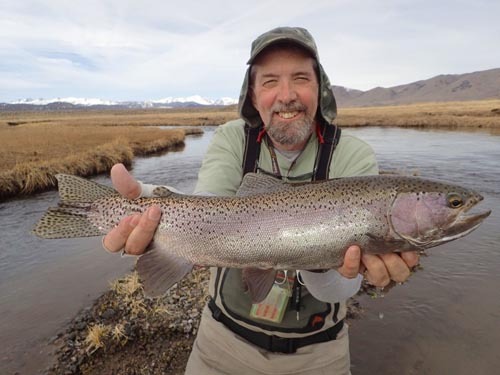
Report Date:
https://tomloe.com/Nice weather to continue through this week, with a string of storms forecast to begin on 3/6/16. “The fishing” has been better than the “catching” recently. Numbers of Crowley Steelhead have begun to decline, & it appears that the winter run is now receding. We are seeing increasing amounts of hens that have dropped their roe, and some fish that are heading back towards the lake. You may also observe fish that have white, “fuzzy” patches; or spots all over their bodies. Some of these fish may be dying, or drifting with the current with lethargic behavior. This is a horrible disease called cold water fungus, and it attacks fish that have lost their natural slime due to spawning. It can be fatal if it infects the gills, or eyes. A prolonged period of high pressure is forecast, which will keep water temps elevated. Warm water temps move the migratory rainbows onto the gravel beds; as opposed to the deeper pools. Scouting out a section of river to spot where the fish are holding is wise. During colder periods the fish move back into the pools seeking the insulation properties that deeper water provides. Water flows have dropped, and even the sections below Hot Creeks inlets have good water clarity. First generation BWO’s, & small midges are triggering feeding activity from the resident trout on the warmer days. Most popular attractor patterns will get you looks from the bigs. SJ worms, crystal Vanderleeches, crystal soft eggs, Assassins, and Agent Orange patterns have got us into them while nymphing below an Under-cator. Size 16/18 adult Blue Winged Olive patterns, & small parachute midges will replicate the hatches. Flashback pheasant tails, & Assassins are spot on replicas for the nymph stage of this cold water mayfly. Use #18-22 gillies, crystal chironomid pupa, broken back midges, crystal tiger, & zebra midges for nymphs that imitate midge larva or emergers. Caddis larva are present on the stream bed pumice rocks now. Olive crystal caddis imitations can be a good call for the resident fish grubbing the bottom during warmer periods. Parachute adult midges will get you looks when the fish are feeding on the “clusters” late afternoons. Please don’t squeeze the egg laden hens near the belly. That will cause the roe to discharge prematurely. Look for oval depressions that appear brighter, or scraped clean on the riffles below pools. These are active spawning nests; or “redds” and you must avoid stepping on them.